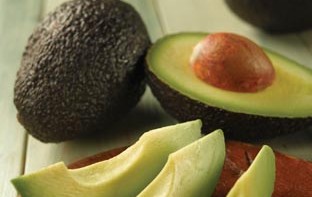healthy eating
Choosing Healthy Fats

For years, nutritionists and doctors have preached the benefits of a low-fat diet. We’ve been told that reducing the amount of fat we eat is the key to losing weight, managing cholesterol, and preventing health problems. But when it comes to your mental and physical health, simply “cutting the fat” just doesn’t cut it.
The Benefits of Healthy Fats To Your Overall Health:
Research shows that, more than the total amount of fat in your diet, it’s the types of fat you eat that really matter. Bad fats increase your cholesterol and your risk of certain diseases, while good fats have the opposite effect, protecting your heart and supporting overall health. In fact, good fats—such as omega-3 fats—are absolutely essential not only to your physical health but your emotional well-being. Benefits include:
- Help you manage your moods
- Stay on top of your mental game
- Fight fatigue
- And even help control your weight
Facts About Fats
Fact: The mix of fats that you eat, rather than the total amount in your diet, is what matters most when it comes to your cholesterol and health. The key is to eat more good fats and less bad fats.
Fact: Saturated fats and trans fats are bad for you because they raise your cholesterol and increase your risk for heart disease. But monounsaturated fats and polyunsaturated fats are good for you, lowering cholesterol and reducing your risk of heart disease.
Fact: A “fat-free” label doesn’t mean you can eat all you want without consequences to your waistline. Many fat-free foods are high in sugar, refined carbohydrates, and calories which cause weight gain.
Fact: The obesity rates for Americans have doubled in the last 20 years, coinciding with the low-fat revolution. Cutting calories is the key to weight loss, and since fats are filling, they can help curb overeating.
Fact: Where you carry your fat matters. The health risks are greater if you tend to carry your weight around your abdomen, as opposed to your hips and thighs. A lot of belly fat is stored deep below the skin surrounding the abdominal organs and liver, and is closely linked to insulin resistance and diabetes.
Types of dietary fat: Good fats vs. bad fats
To understand good and bad fats, you need to know the names of the players and some information about them. There are four major types of fats:
- monounsaturated fats
- polyunsaturated fats
- saturated fats
- trans fat
Good Fats
Monounsaturated fats and polyunsaturated fats are known as the “good fats” because they are good for your heart, your cholesterol, and your overall health.
 Monounsaturated fat
Monounsaturated fat
• Olive oil, Canola oil, Sunflower oil, Peanut oil, Sesame oil
• Avocados, Olives
• Nuts (almonds, peanuts, macadamia nuts, hazelnuts, pecans, cashews)
Polyunsaturated fat
• Soybean oil, Corn oil, Safflower oil
• Walnuts
• Sunflower, sesame, and pumpkin seeds, flaxseed
• Fatty fish (salmon, tuna, mackerel, herring, trout, sardines)
• Soy: Soymilk, Tofu
Bad Fats
Saturated fats and trans fats are known as the “bad fats” because they increase your risk of disease and elevate cholesterol. Appearance-wise, saturated fats and trans fats tend to be solid at room temperature (think of butter or traditional stick margarine), while monounsaturated and polyunsaturated fats tend to be liquid (think of olive or corn oil).
 Saturated fat
Saturated fat
- High-fat cuts of meat (beef, lamb, pork)
- Chicken with the skin
- Whole-fat dairy products (milk and cream)
- Butter
- Cheese
- Ice cream
- Palm and coconut oil
- Lard
 Trans fat
Trans fat
- Commercially-baked pastries, cookies, doughnuts, muffins, cakes, pizza dough
- Packaged snack foods (crackers, microwave popcorn, chips)
- Stick margarine
- Vegetable shortening
- Fried foods (French fries, fried chicken, chicken nuggets, breaded fish)
- Candy bars
General guidelines for choosing healthy fats
With so many different sources of dietary fat—some good and some bad—the choices can get confusing. But the bottom line is simple: don’t go no-fat, go good fat.
If you are concerned about your weight or heart health, rather than avoiding fat in your diet, try replacing saturated fats and trans fats with good fats. This might mean replacing some of the meat you eat with beans and legumes, or using olive oil rather than butter.
- Try to eliminate trans fats from your diet. Check food labels for trans fats. Avoiding commercially-baked goods goes a long way. Also limit fast food.
- Limit your intake of saturated fats by cutting back on red meat and full-fat dairy foods. Try replacing red meat with beans, nuts, poultry, and fish whenever possible, and switching from whole milk and other full-fat dairy foods to lower fat versions.
- Eat omega-3 fats every day. Good sources include fish, walnuts, ground flax seeds, flaxseed oil, canola oil, and soybean oil.
Saturated fats: Reduce this bad fat
When focusing on healthy fats, a good place to start is reducing your consumption of saturated fats. Saturated fats are mainly found in animal products such as red meat and whole milk dairy products. Poultry and fish also contain saturated fat, but less than red meat. Other sources of saturated fat include tropical vegetable oils such as coconut oil and palm oil.
Simple ways to reduce saturated fat
- Eat less red meat (beef, pork, or lamb) and more fish and chicken
- Go for lean cuts of meat, and stick to white meat, which has less saturated fat.
- Bake, broil, or grill instead of frying.
- Remove the skin from chicken and trim as much fat off of meat as possible before cooking.
- Avoid breaded meats and vegetables and deep-fried foods.
- Choose low-fat milk and lower-fat cheeses like mozzarella whenever possible; enjoy full-fat dairy in moderation.
- Use liquid vegetable oils such as olive oil or canola oil instead of lard, shortening, or butter.
- Avoid cream and cheese sauces, or have them served on the side.
Sources of Saturated Fats with Healthier Options:
Butter Olive oil
Cheese Low-fat or reduced-fat cheese
Red meat White meat chicken or turkey
Cream Low-fat milk or fat-free creamer
Eggs Egg whites, an egg substitute (e.g. Eggbeaters), or tofu
Ice cream Frozen yogurt or reduced fat ice cream
Whole milk Skim or 1% milk
Sour cream Plain, non-fat yogurt
Eliminate trans fats from your diet
A trans fat is a normal fat molecule that has been twisted and deformed during a process called hydrogenation. During this process, liquid vegetable oil is heated and combined with hydrogen gas. Partially hydrogenating vegetable oils makes them more stable and less likely to spoil, which is very good for food manufacturers—and very bad for you. No amount of trans fats is healthy. Trans fats contribute to major health problems, from heart disease to cancer.
Sources of trans fats
 Many people think of margarine when they picture trans fats, and it’s true that some margarines are loaded with them. However, the primary source of trans fats in the Western diet comes from commercially-prepared baked goods and snack foods:
Many people think of margarine when they picture trans fats, and it’s true that some margarines are loaded with them. However, the primary source of trans fats in the Western diet comes from commercially-prepared baked goods and snack foods:
- Baked goods – cookies, crackers, cakes, muffins, pie crusts, pizza dough, and some breads like hamburger buns
- Fried foods – doughnuts, French fries, fried chicken, chicken nuggets, and hard taco shells
- Snack foods – potato, corn, and tortilla chips; candy; packaged or microwave popcorn
- Solid fats – stick margarine and semi-solid vegetable shortening
- Pre-mixed products – cake mix, pancake mix, and chocolate drink mix
Be a trans fat detective
- When shopping, read the labels and watch out for “partially hydrogenated oil” in the ingredients. Even if the food claims to be trans fat free, this ingredient makes it suspect.
- With margarine, choose the soft-tub versions, and make sure the product has zero grams of trans fat and no partially hydrogenated oils.
- When eating out, put fried foods, biscuits, and other baked goods on your “skip” list. Avoid these products unless you know that the restaurant has eliminated trans fat.
- Avoid fast food. Most states have no labeling regulations for fast food, and it can even be advertised as cholesterol-free when cooked in vegetable oil.
- When eating out, ask your server or counter person what type of oil your food will be cooked in. If it’s partially hydrogenated oil, run the other way or ask if your food can be prepared using olive oil, which most restaurants have in stock.
 Getting more good unsaturated fats in your diet
Getting more good unsaturated fats in your diet
Okay, so you realize you need to avoid saturated fat and trans fat… but how do you get the healthy monounsaturated and polyunsaturated fats everyone keeps talking about?
The best sources of healthy monounsaturated and polyunsaturated fats are vegetable oils, nuts, seeds, and fish.
- Cook with olive oil. Use olive oil for stovetop cooking, rather than butter, stick margarine, or lard. For baking, try canola or vegetable oil.
- Eat more avocados. Try them in sandwiches or salads or make guacamole. Along with being loaded with heart and brain-healthy fats, they make for a filling and satisfying meal.
- Reach for the nuts. You can also add nuts to vegetable dishes or use them instead of breadcrumbs on chicken or fish.
- Snack on olives. Olives are high in healthy monounsaturated fats. But unlike most other high-fat foods, they make for a low-calorie snack when eaten on their own. Try them plain or make a tapenade for dipping.
- Dress your own salad. Commercial salad dressings are often high in saturated fat or made with damaged trans fat oils. Create your own healthy dressings with high-quality, cold-pressed olive oil, flaxseed oil, or sesame oil.
Omega-3 fatty acids: Superfats for the brain and heart
Omega-3 fatty acids are a type of polyunsaturated fat. While all types of monounsaturated and polyunsaturated fats are good for you, omega-3 fats are proving to be especially beneficial. We’re still learning about the many benefits of omega-3 fatty acids, but research has shown that they can:
- Prevent and reduce the symptoms of depression
- Protect against memory loss and dementia
- Reduce the risk of heart disease, stroke, and cancer
- Ease arthritis, joint pain, and inflammatory skin conditions
- Support a healthy pregnancy
Omega-3 fatty acids and mental health
Omega-3 fatty acids are highly concentrated in the brain. Research indicates that they play a vital role in cognitive function (memory, problem-solving abilities, etc.) as well as emotional health. Getting more omega-3 fatty acids in your diet can help you battle fatigue, sharpen your memory, and balance your mood. Studies have shown that omega-3s can be helpful in the treatment of depression, attention deficit/hyperactivity disorder (ADHD), and bipolar disorder.
There are several different types of omega-3 fatty acids:
EPA and DHA – Eicosapentaenoic acid (EPA) and docosahexaenoic acid (DHA) have the most research to back up their health benefits. Both are found in abundance in cold-water fatty fish.
ALA – Alpha-linolenic acid (ALA) comes from plants. Studies suggest that it’s a less potent form of omega-3 than EPA and DHA. The best sources include flaxseed, walnuts, and canola oil.

Fish: The best food source of omega-3 fatty acids
Omega-3 fats are a type of essential fatty acid, meaning they are essential to health, but your body can’t make them. You can only get omega-3 fats from food.
The best sources are fatty fish such as salmon, herring, mackerel, anchovies, or sardines, or high-quality cold-water fish oil supplements. Canned albacore tuna and lake trout can also be good sources, depending on how the fish were raised and processed.
Some people avoid seafood because they worry about mercury or other possible toxins in fish. However, most experts agree that the benefits of eating two servings a week of these cold-water fatty fish outweigh the risks.
If you’re a vegetarian or you don’t like fish, you can still get your omega-3 fix by eating algae (which is high in DHA) or taking a fish oil or algae supplement.
The truth about dietary fat and cholesterol
Cholesterol is a fatty, wax-like substance that your body needs to function properly. In and of itself, cholesterol isn’t bad. But when you get too much of it, it can have a negative impact on your health.
Cholesterol comes from two sources: your body and food. Your body (specifically, the liver) produces some of the cholesterol you need naturally. But you also get cholesterol directly from any animal products you eat, such as eggs, meat, and dairy. Together, these two sources contribute to your blood cholesterol level.
Good vs. bad cholesterol
As with dietary fat, there are good and bad types of cholesterol. HDL cholesterol is the “good” kind of cholesterol found in your blood. LDL cholesterol is the “bad” kind. The key is to keep HDL levels high and LDL levels low. High levels of HDL cholesterol help protect against heart disease and stroke, while high levels of LDL cholesterol can clog arteries, increasing your risk.
Research shows that there is only a weak link between the amount of cholesterol you eat and your blood cholesterol levels. The biggest influence on your total and LDL cholesterol is the type of fats you eat—not your dietary cholesterol. So instead of counting cholesterol, simply focus on replacing bad fats with good fats.
- Monounsaturated fats lower total and bad (LDL) cholesterol levels, while increasing good cholesterol (HDL).
- Polyunsaturated fats lower triglycerides and fight inflammation.
- Saturated fats raise your blood cholesterol.
- Trans fats are even worse than saturated fats, since they not only raise your bad LDL cholesterol, but also lower the good HDL cholesterol.
Source: HELPGUIDE.org in collaboration with Harvard Health Publications
Authors: Melinda Smith, M.A., Maya W. Paul, and Robert Segal, M.A.

